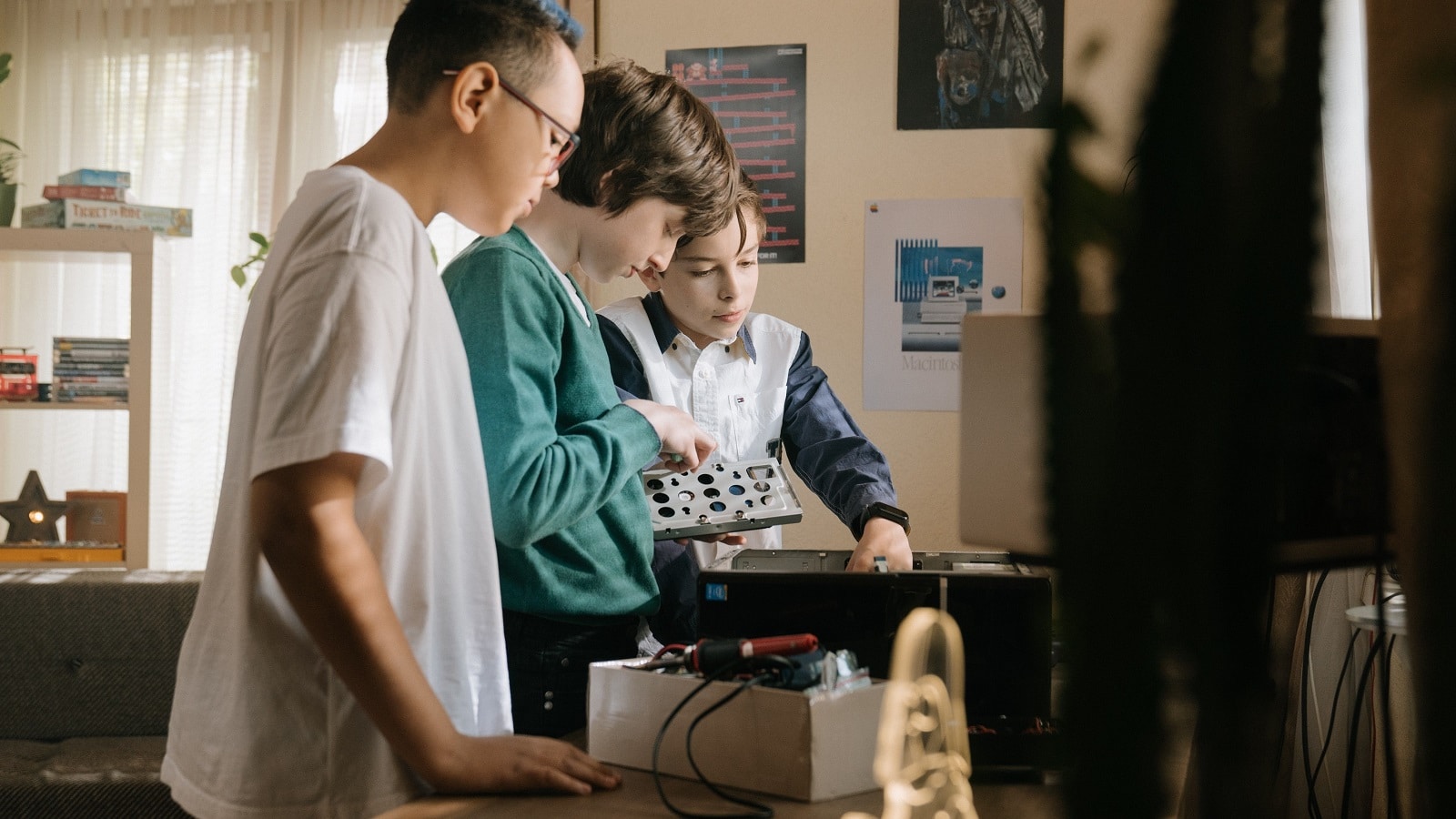Last Updated On: July 1st, 2024
First let’s begin with the basics of learning styles. Learning style refers to the way you absorb new information best. Everyone is born with the ability to process information in various ways. Some children are born with more visual learning skills. Others are excellent at listening to the sounds around them. There are even children who learn by touching and doing. We refer to these three learning styles respectively as visual, auditory, and kinesthetic. Most children have a combination learning style, but some can be solely one kind of learner. When you combine a classroom of 30 kids this is where things get interesting. The chances that all of the students will be visual or auditory is very slim. That means it’s on teachers to vary their lesson plans and modes for teaching. Students that don’t exhibit the teacher’s didactic methods tend to fall behind very quickly. In 2020, this has become overwhelmingly evident in many classrooms. While teachers are doing their best to keep up with the demands of technology in the classroom, students are inevitably trying to catch up. Although we can’t change the conditions of the pandemic, it’s important to focus on the things that can be controlled.
1. Visual Learner
This refers to someone who learns best with images, diagrams, visual art, and pictures. As someone who is 95% visual I can attest to the need for a photo before any information can be grounded within my knowledge base.
Struggles and Strengths:
-inability to listen to long online lectures and absorb the information
-better at subjects with numbers, images, maps, videos (ex: math, art)
-great at seeing the big picture
Solutions:
-when teachers are lecturing take a moment to open new windows and search for images to tie in the new ideas
-draw when needed, create visual aids to organize your notes and solidify the information
2. Auditory Learner
This refers to someone who learns best in lecture format, musical stylings, rap, rhyme, and audio recall. Although I don’t possess this skill, I have witnessed it in many musicians. Some call it having an “ear”, but really it’s much more about hearing the material and retaining the new facts to memory.
Struggles and Strengths:
-in courses that don’t require much auditory learning they face challenges with retention
-successful with courses like history (lecture-based) and music
-able to pick information up the fastest and most efficiently as audio is the most commonly used style and is delivered expeditiously
Solutions:
-read notes and assignments out loud
-have music lightly playing in the background of classes that are more demanding
-find a way to create a story out of what was learned, tell that story to family, repeat to self
3. Kinesthetic Learner
This refers to someone who learns best by doing and moving during a lesson. Usually this learning style is easy to find in hyperactive young children. However, many students, even adults including myself, have elements of this learning style. It’s important to understand traditional classrooms don’t lend themselves very much to kinesthetic students. It’s crucial for them to pace and tap and create as they learn and that is difficult to execute in large classrooms.
Struggles and Strengths:
-inability to sit still while learning
-do well with courses that involve movement and creation (ex: science, art, computers)
-great at multitasking their learning with other things
Solutions:
-find a squishy toy to keep moving and squeezing during long lectures
-find ways to move in the computer chair and vary up the spaces to learn in daily (perhaps a different room per day/per subject)
-chew on something, rub a pencil, tap the feet, connect physically when losing focus on the new material
When it comes to online learning…
Overall the online environment is both limiting and liberating. There are great ways to explore the benefits of the online experience for all types of learners.
Visual learners tend to love online readings and simulations. They love having independence to create an organized, visually-appealing work space. For more understanding on visual spaces and learners, check out the essentials of executive functioning: Executive Functioning: How To Help With Organization
Regardless of their advantage, it’s important to try new things that aren’t quite as readily available in the online classes:
⇢Devise and color code review sheets and study materials
⇢Build mind maps and diagrams
⇢Create mnemonic devices for memorizing key elements
To read more about additional study tips for various learning styles visit: Is Online Education Right for You? | St. Catherine Online OTA
Also check out this psychological study on online education affecting learning style: Different Keystrokes for Different Folks: Addressing Learning Styles in Online Education
Naturally auditory learners are thriving the most in the online learning space as their learning style is well matched to this kind of delivery. They are able to watch and rewind audio recordings and participate extensively in discussions and lectures.
Although they are typically the most suited for online teaching, it’s also important to give auditory learners new skills that may help them improve their success:
⇢Try reading textbook passages out loud (even if alone)
⇢Record main ideas on voice memos and play these back while studying to help absorb only the essential details
⇢Plan a regular study session with a classmate and talk out the lesson together
Most kinesthetic learners actually enjoy online learning a bit more than in the classroom. This stems from their innate desire to move and incorporate their learning into doing. At home this comes much easier with familiar spaces, plentiful objects, and laptops to move around.
Here are a few ideas to help kinesthetic children find even more strength in the online setting:
⇢Create a movement that coincides with the particular information that’s being learned
⇢Build simulations and drag and drop study tools (ex: game based study resources like Quizlet)
⇢Move around the room during lectures, move the body while learning, maybe even dance it out while studying
Naturally online learning is a ton of trial and error. It’s important to remember we’re all in this new world together. Understanding the learning curve and finding ways to combat the challenges is the real key to flourishing in the new online environment. If the online classes seem endless, just start with taking a breath. We’ve come this far; there’s only up from here. Also, try checking out our latest blog on End of Semester: Ways to Boost Your Grade for a little triage.
To learn more about our tutoring practices and game plans, check out our Elementary, Middle School, or High School service pages. Happy learning!




















